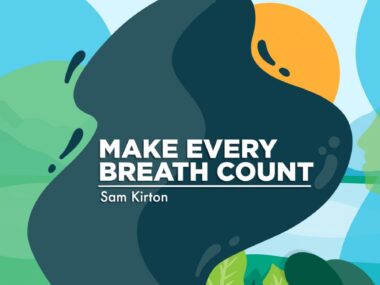Spring is welcome, but its merging with allergy season is not
Bracing for pollen's effects with changes of medication and habits
Written by |

The arrival of spring here in Virginia is both a blessing and a curse. Despite the improved weather, I think of it as pollen and mold season.
As a longtime sufferer of seasonal allergies, I don’t need the gentle yellow-green tint on vehicles and patio furniture to remind me to brace myself. When I was diagnosed with idiopathic pulmonary fibrosis in January 2017, I had a lingering cough, which I attributed to my allergies. I realized how wrong I was about that.
Nonetheless, my allergies persist today. Dealing with them has become part of my routine year-round. With the drought in the area winding down and the mild winter behind us, I expect pollen counts to be high this spring.
I take 35 pills every day. (Longtime readers who notice details will see that the number has gone up by one. My care team just added empagliflozin, a diabetes drug, to help manage my chronic kidney disease off-label.) I take Zyrtec (cetirizine) to relieve allergy symptoms year-round. Even during the peak of summer, when the pollen numbers decrease, I’ll continue to take my allergy medications.
Managing my symptoms
Since having a bilateral lung transplant in July 2021, I’ve felt I must be more vigilant. In addition to taking Zyrtec, I also use Atrovent (ipratropium) nasal spray as-needed. The Atrovent provides some relief from the runny nose associated with my allergies, helping to eliminate or reduce postnasal drip.
Postnasal drip lowers long-term survival for lung transplant patients, and it can introduce an infection into the lungs. I manage that particular symptom with Atrovent.
I can control the other allergy symptoms without medications. The little things I normally put off, some of which I cover in the following paragraphs, become more important at this time of year.
For each of these tasks when I might encounter pollen or mold, I’ll wear a procedure mask, especially if it’s likely I’ll disturb pollen or mold outside, making it airborne.
Air filters in our home cooling system may have to be changed more frequently. Even with the doors and windows closed, pollen seems to penetrate even the best-sealed home.
Since my transplant, I have restrictions on the water I drink. We live in a rural area, and our water comes from a well, which isn’t considered safe. We use 5-gallon bottles of spring water, which typically sit outside until they’re loaded in our water cooler. The outdoor bottles take on a green tint that must be cleaned before they’re brought into the house.
Our vehicles, because they’re often outdoors, must be constantly cleaned — not just the exterior, but the interior as well, which is more of a challenge. During the heaviest part of pollen season, I try to handle that by switching the car cooling system to recirculate the cabin air and not draw in air from the outside. But I still carry a box of Swiffer pads in my truck to wipe down interior surfaces. They seem to capture the dust and pollen, preventing it from becoming airborne particles again.
For the next six weeks, I avoid situations where I might come in contact with larger amounts of pollen. As the pollen levels, especially tree pollen, decline, I’ll take the final step to rid our home of pollen by having the walkways, deck, and porch power-washed. Most of our outdoor furniture is covered for now, and those covers will be cleaned before they’re put away for the season.
Your team will take care of finding the right medications for you. Beyond that, there are other allergen triggers you can address. My tasks above are not all-inclusive, but sharing them with you is how I can make every breath count.
Please let me know in the comments below what hacks you use to reduce exposure to pollen.
Note: Pulmonary Fibrosis News is strictly a news and information website about the disease. It does not provide medical advice, diagnosis, or treatment. This content is not intended to be a substitute for professional medical advice, diagnosis, or treatment. Always seek the advice of your physician or other qualified health provider with any questions you may have regarding a medical condition. Never disregard professional medical advice or delay in seeking it because of something you have read on this website. The opinions expressed in this column are not those of Pulmonary Fibrosis News or its parent company, Bionews, and are intended to spark discussion about issues pertaining to pulmonary fibrosis.








Deborah Herbert
Thanks for sharing. I have terrible allergies year round. I was listed for a bi-lateral lung transplant a few days ago & I am hoping when I am transplanted allergies will go away or at least the hypersensitivity to everything.
By the way, I enjoyed reading about your 1st international trip post transplant.
Samuel Kirton
Deborah,
Thanks for reading my column and for your comments. My allergies, post-transplant, are essentially the same. The severity of the pollen levels are a huge factor in how I am impacted. I look at the allergy forecast each day before I look at the weather. My care team manages mine with the medications I mentioned in the column.
Sam ...
Jeffrey Borrell
Thanks. I do the similar prevention but now will add to it
Samuel Kirton
Jeffrey,
Thanks for reading my column and your comment.I am glad you found the information useful.
Sam ...